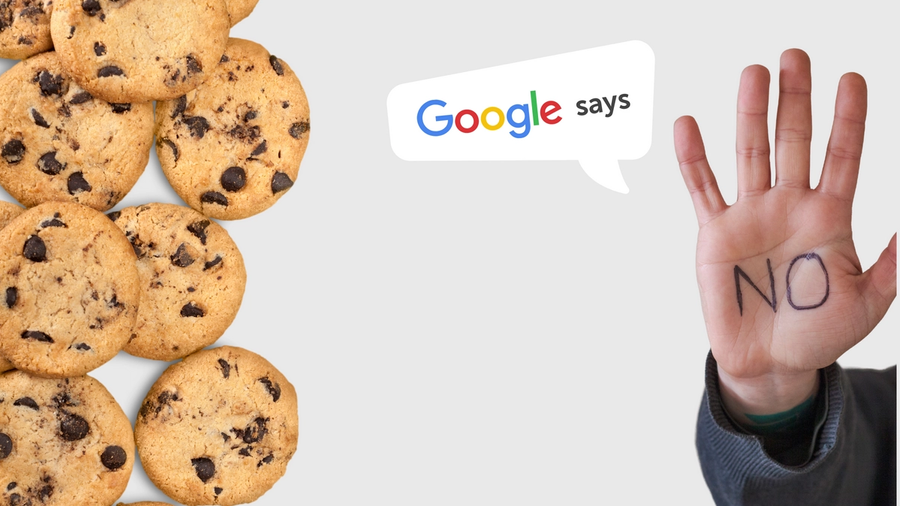News, Views & Opinions
The Death of the Third-Party Cookie: what businesses need to know
At Nutcracker, we love talking about cookies – and we don’t just mean the chocolate-chip variety.
Cookies are invaluable tools for digital marketing, as they allow companies to capture information about their users and use it to target audience groups with tailor-made advertising. However, growing concerns about customer data and privacy regulations have gradually eaten away at the cookie concept, and now third-party cookies could be on their way out for good.
Safari and Firefox banned third-party cookies long ago, but Google has been preparing for a complete phaseout of third-party cookie support on Chrome by 2022. It’s made this decision because third-party cookies don’t ‘stand up to rapidly evolving regulatory restrictions’ and that they aren’t a ‘sustainable long-term investment’.
With Chrome being the world’s most popular browser (with more than 3 billion users), it’s not surprising that many are calling Google’s announcement the ‘death of the third-party cookie’. But what are third-party cookies? And will the death of third-party cookies take a bite out of your business growth?
Leaving a trail of crumbs for brands to follow
Cookies are text files that allow websites to store info directly on a local server. They can be used for a variety of things, from keeping your online shopping cart fully stocked if you accidentally click off a webpage, to tracking user behaviour.
There’s a key difference though when it comes to cookies – two different batches if you will. While first-party cookies are created and stored by websites you are currently visiting. Third-party cookies are created and paced by third parties outside of that website.
This means that third-party cookies can track your browsing data and searches across multiple websites, and this data can be used to target you with adverts for more relevant products and services as you explore the web. Type in ‘bad hair day’ for example, and you might be confronted with more hair products (side-note: we’ve no idea where this example came from).
How third-party cookies help your business
Businesses using content management systems, Google Ads or social media plugins on their webpages are most likely using cookies. They’re a great tool for seeing how people interact with your site and make changes to increase performance – as well as ensuring that users retain their same settings every time they circle back to your site.
On a deeper level, third-party cookies give a much broader picture of an individual consumer’s buying interests and habits. For example, perhaps you are a jewellery business looking to target a younger demographic, but aren’t able to accrue data on that age group from your own sources – this is where third-party data comes into play.
What will the removal of third-party cookies mean for businesses?
That really depends on the type of business, how they collect data and what they tend to do with it.
It’s important to remember that first-party cookies – used to collect analytical data and remember preferences – aren’t being phased out. For many businesses, this means they’ll still be able to collect useful customer data and provide useful functions on their web pages.
However, if they rely on digital marketing and data supplied from third-party cookies to personalise their services, they need to be prepared to find other ways to build a profile of their customers in the future.
It’s being predicted that the removal of third-party cookies will hit advertisers hard, as it will make it harder to understand consumer behaviour – what they are interested in, what websites they search for – so they can promote relevant content. According to Deloitte, publishers might also see their revenues affected as they often partner with third-party data providers that collect data via their pages.
With this in mind, several options have been floated as to how businesses can prepare to take the potential brunt of the third-party phaseout. We’ve provided a few key examples below.
Focus on first-party data collection
Without the benefit of third-party cookies to fall back on, marketers and businesses should think about how they can get more out of their customers themselves. Supplement first-party cookies with chatbots, forms on landing pages, or content such as PDFs that require customers to fill in a questionnaire before they can download them.
Use targeting strategies that don’t involve third-party cookies
Although third-party cookies might be a shortcut to personalisation, there are other ways to get your product in front of those who need it most. Contextual targeting, for example, examines the needs of your business and seeks out the best place for you to position ads. It might not be a new strategy, but it’s non-invasive and doesn’t come with the same data concerns.
Prioritise email marketing
If done well, email marketing can be an incredible draw for your business – that’s why 93% of B2B marketers use email channels for distributing content. Personalise your emails, adding exciting content such as videos and eye-catching infographics, and invite customers to interact with your business – you won’t regret it.
Nutcracker takeaway
As consumers grow increasingly conscious of how their data is used online, businesses must square their data needs with an increasing demand for a safe, transparent experience online.
Third-party cookies may be crumbling – but for businesses looking to target their audience with personalised experiences, there’s no reason why that should dull their appetite for growth.
Nutcracker works with businesses to understand their product/service, challenges and the audience they are trying to reach. Get in touch today and find out how we can boost your business growth by emailing hello@nutcrackeragency.co.uk.
Share this:






